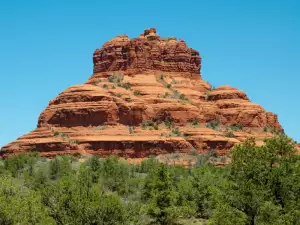Okanagan Valley

Okanagan Valley is a picturesque area, located primarily in southern British Columbia, in Canada. The area reaches Shuswap north and south boundaries reached with the United States. Overall, the valley takes up the entire Osoyos dry area. This beautiful area can be reached with a flight to Kelowna, and then the road by car is easy and pleasant.
The name Okanagan comes from the Indian tribe Shuswap, which called these lands Naytaki Okanagan. The word means the long fish in Indian. It is believed that this name comes from the stories of a giant monster that comes out periodically from the waters of the homonymous lake. It is like a reptile, and unlike the monster of Loch Ness, people living near the water pool report its appearance at least once a year.
Lake Okanagan lies at the heart of the valley and occupies a significant 135 km. It extends north-south from Vernon to Penticton.
The first Europeans arrived in the region in 1811, by the settler and translator Father Charles John Felex Adolphe Marie Pandosy. In the beginning people were occupied with farming and cattle were bred in farms, and subsequently it was proved that the area is suitable for growing fruit.
As the valley Okanagan has the warmest climate in the whole of Canada, in its northern parts numerous fruit trees like cherries, pears, apples plums, apricots and pretty vineyards are now raised. The southern part of the valley, which includes the territories of Osoyos and Oliver are very dry, resembling desert plains.
Production of wine here is highly developed, and its main hub is Kelowna. Residents of British Columbia have long been known as some of the best producers of wines, stored in first-class wineries.
Summer months in Okanagan are ideal for sunbathing and swimming along the beaches of the lake. Other entertainment options for tourists are hiking and fishing. Furthermore, the area has excellent golf courses.
For nature lovers there are also quite lovely options. About 25 km south of Penticton park is Vaseux Lake Provincial Park. It is home to many endangered birds and animals. Here you can see swans and wild north American whistling ducks and Californian long horned sheep that hide among the rocks.















